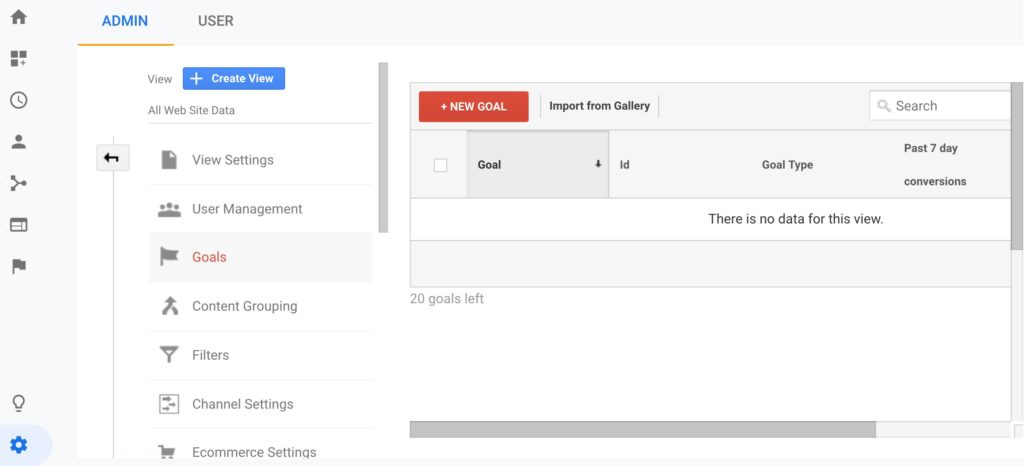Understanding What Data Is Google Analytics Goals Unable to Track
Wiki Article
Introducing the Blind Spots: Recognizing What Google Analytics Goals Can not Gauge
In the world of digital analytics, Google Analytics stands as a powerful device for tracking and analyzing online customer interactions. Understanding what Google Analytics objectives can not determine is important for acquiring a comprehensive sight of individual behavior and involvement.Customer Behavior on External Platforms
Understanding just how customers engage on external systems is vital for enhancing on the internet strategies. Exterior platforms, such as social media networks, reference sites, and on-line forums, play a substantial function in driving website traffic to a business's website. By examining customer behavior on these platforms, organizations can obtain useful understandings into the effectiveness of their marketing initiatives and the preferences of their target market.One trick element of user habits on outside systems is the referral resource. By tracking where the users are coming from, services can recognize which systems are driving the most traffic to their site. This details can aid companies designate their sources more efficiently, concentrating on the systems that generate the very best results.

Offline Communications and conversions
Analyzing individual habits on outside platforms supplies useful understandings right into on the internet methods; nevertheless, taking into consideration offline conversions and communications is similarly imperative for a comprehensive understanding of a firm's total efficiency. While Google Analytics stands out at tracking on the internet interactions, it drops brief in catching the total consumer trip that usually consists of offline touchpoints. Offline conversions, such as in-store acquisitions or phone questions, play a considerable function in numerous services' success. Disregarding these interactions can lead to an altered sight of the efficiency of marketing campaigns and total service performance.
Acknowledgment Beyond Last Click
When diving into the realm of digital advertising and marketing analytics, it becomes important to look beyond the single touchpoint of the last click for an extra comprehensive understanding of attribution. While Google Analytics provides useful understandings into individual habits, counting entirely on last-click acknowledgment can be limiting - what data is google analytics goals unable to track. Attribution designs that exceed the last click provide an extra nuanced sight of the customer trip, considering all the touchpoints that cause a conversionAcknowledgment past the last click enables marketing experts to appoint credit report to different interactions along the conversion path, offering a more clear photo of the effectiveness of various advertising networks. By exploring multi-touch acknowledgment models such as direct, time decay, or position-based attribution, businesses can much better allocate their advertising and marketing budget plans and optimize their strategies for optimal influence.
Comprehending the influence of each touchpoint in the conversion process is vital for making informed decisions and making best use of ROI. By welcoming attribution beyond the last click, businesses can obtain deeper understandings right into customer actions and tailor their marketing initiatives better.
Cross-Device and Cross-Browser Tracking

In a similar way, cross-browser tracking enhances cross-device tracking by recording individual actions as they change in between various web internet browsers. Comprehending just how individuals communicate with websites on various browsers can aid marketing experts enhance their on-line experiences to make certain uniformity and performance across different systems.
Qualitative Information and Individual Intent
Recognizing individual intent with qualitative information evaluation is vital for creating targeted digital marketing approaches that resonate with the needs and preferences of the target audience. Qualitative data provides understandings into the 'why' behind individual actions, shedding light on motivations, feelings, and choices that measurable data alone can not capture. By evaluating user feedback, remarks, and communications, marketing experts can reveal useful info about user intent, permitting them to customize webpage their messaging, material, and offerings to better line up with what their audience is looking for.Qualitative information additionally aids in recognizing the context in which customers involve with a web site or application. This contextual understanding allows marketing professionals to develop more appropriate and individualized experiences, eventually driving greater interaction and conversion rates. By delving into user intent through qualitative information evaluation, organizations can gain a much deeper understanding of their target market, resulting in much more effective advertising and marketing approaches that fulfill individuals' expectations and needs.
Conclusion
In verdict, read this article Google Analytics objectives have limitations in gauging individual actions on exterior systems, offline conversions, attribution beyond last click, cross-device and cross-browser monitoring, and qualitative data connected to individual intent. what data is google analytics goals unable to track. It is essential for services to be knowledgeable about these unseen areas in order to supplement their information evaluation with other devices and approaches to acquire a more thorough understanding of their audience and improve their total digital advertising and marketing methodsBy analyzing individual actions on these platforms, services can obtain important understandings right into the effectiveness of their advertising initiatives and the preferences of their target audience.
Assessing user behavior on outside platforms gives important understandings right into on-line methods; nonetheless, taking into consideration offline conversions and interactions is similarly necessary for a comprehensive understanding of a firm's total performance.In digital marketing analytics, moving past last-click acknowledgment to explore cross-device and cross-browser tracking is necessary for obtaining an all natural understanding of customer communications throughout different systems and why not check here gadgets. By examining individual comments, comments, and interactions, online marketers can discover important information about customer intent, permitting them to customize their messaging, material, and offerings to better align with what their target market is looking for.
By delving into user intent via qualitative information evaluation, services can get a much deeper understanding of their target audience, leading to much more effective advertising techniques that meet customers' expectations and demands.
Report this wiki page